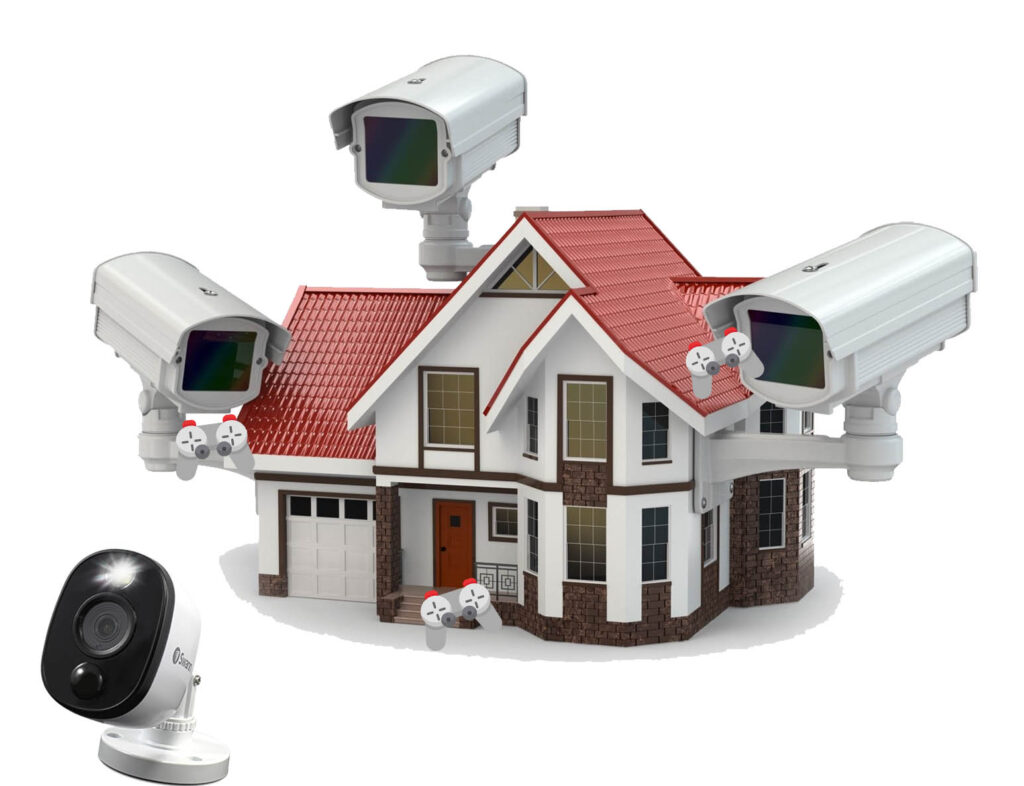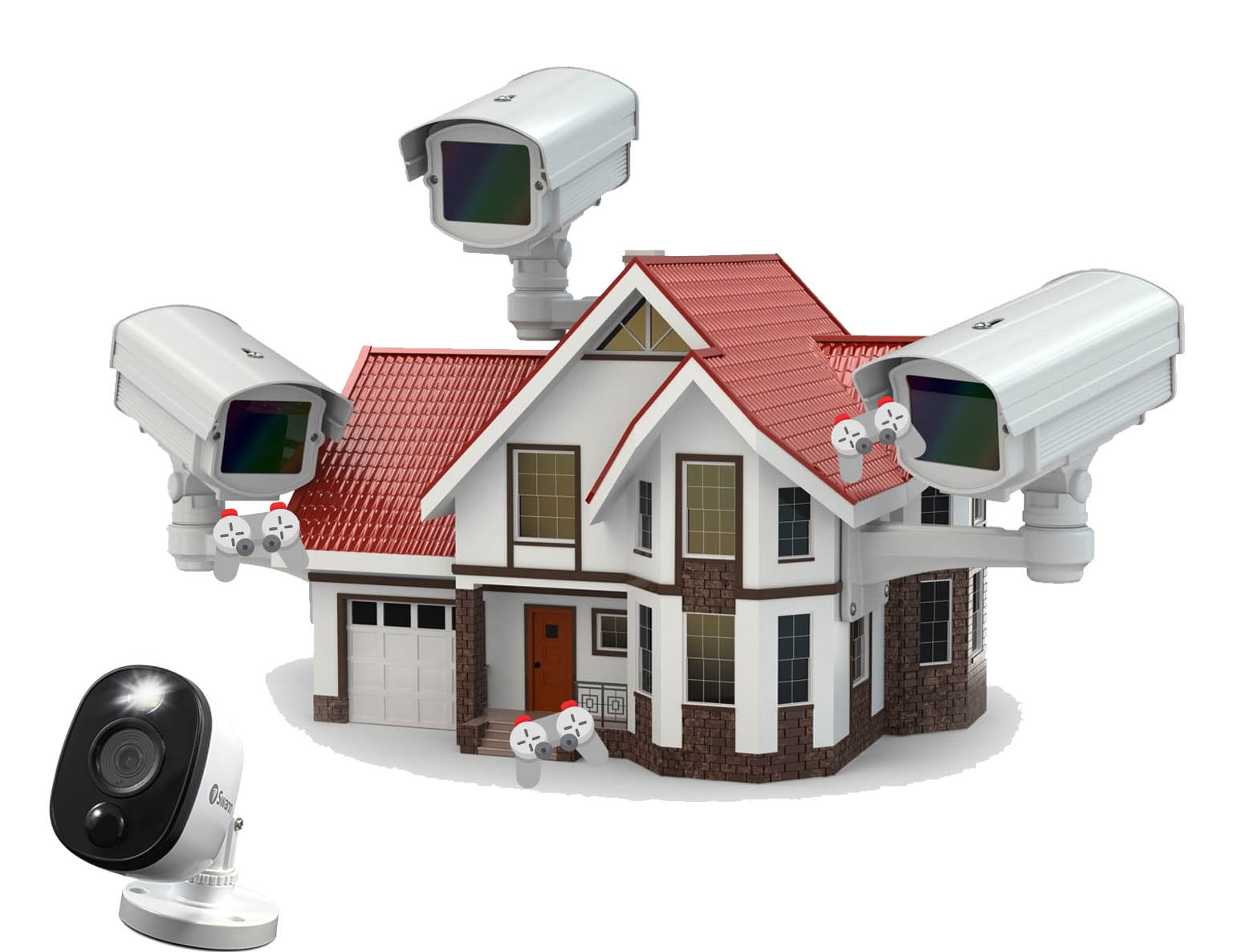Home surveillance has transformed the way we secure our living spaces. With rising concerns about burglaries, break-ins, and property damage, having a robust security system in place has become a necessity. Home surveillance is the use of electronic devices to monitor the activity inside and outside of a home. Security cameras are the most common type of home surveillance device, but there are also other options available, such as motion sensors, door and window sensors, and smart locks.

Home surveillance refers to the practice of monitoring and recording activities in and around a property to prevent unauthorized access, theft, vandalism, and other potential threats. By using a combination of cameras, sensors, and advanced software, these systems offer real-time monitoring and recording capabilities, allowing homeowners to keep a watchful eye on their property even when they are away.
The Importance of Home Surveillance For 2023
Home surveillance systems 2023 act as a deterrent, discouraging potential intruders from attempting any malicious activities on your property. They not only protect against theft but also provide valuable evidence in case of any unfortunate incidents.
Types of Home Surveillance Systems
Wired Surveillance Systems
Wired systems are hardwired into your home’s infrastructure, providing a stable and consistent connection. They are suitable for long-term setups and areas with consistent power supply.
Wireless Surveillance Systems
Wireless systems offer flexibility and easy installation. They rely on Wi-Fi or cellular networks, allowing homeowners to monitor their property remotely.
Components of a Home Surveillance System
Cameras
Cameras are the backbone of any surveillance system. They come in various types, such as dome cameras for wide coverage and bullet cameras for focused views.
Recording and Storage
Modern systems allow continuous recording and storage of footage. Cloud storage and local storage options are available, ensuring your data is safe and accessible.
Monitoring Devices
These devices include monitors, smartphones, and computers, enabling real-time viewing of your property. Remote access apps provide convenience and peace of mind, allowing you to check in from anywhere.
Benefits of Home Surveillance
Home surveillance systems offer a myriad of benefits that extend beyond mere security. Some of the key advantages include:
Crime Deterrence
The presence of visible surveillance cameras can act as a powerful deterrent against potential burglars and intruders. Criminals are less likely to target homes equipped with surveillance systems, knowing that their actions are being monitored and recorded.
Remote Monitoring
Modern home surveillance systems provide the convenience of remote monitoring through smartphone apps or web interfaces. This feature allows homeowners to check the status of their property in real-time, no matter where they are.
Evidence Collection
In the unfortunate event of a break-in or other security breach, surveillance footage serves as valuable evidence for law enforcement and insurance claims. The recorded videos can provide crucial insights into the sequence of events.
Fire and Hazard Detection
Many advanced surveillance systems incorporate sensors that can detect smoke, carbon monoxide, and other hazards. This early detection can save lives and prevent property damage.
Peace of Mind
Perhaps one of the most significant benefits of home surveillance is the peace of mind it offers. Knowing that your home is under constant watch allows you to relax and enjoy your time away, whether it’s a short trip or an extended vacation.
Factors to Consider When Choosing a home security cameras System
Area Coverage
Consider the size and layout of your property when choosing the number and placement of cameras. High-traffic areas and entry points should be prioritized.
Budget
Determine how much you’re willing to invest in a surveillance system. Prices can vary widely based on features and capabilities.
Image Quality
High-resolution cameras capture clear and detailed footage, aiding in identification if needed.
Features
Consider the features that matter most to you, such as night vision, motion detection, remote access, and two-way communication.
Remote Access
Opt for a system that offers remote access capabilities, allowing you to monitor your property even when you’re away.
Scalability
Choose a system that can be easily expanded in the future if you decide to increase coverage.
Brand Reputation
Opt for reputable brands with positive customer reviews and reliable customer support.
Installation Process
DIY Installation
For tech-savvy homeowners, DIY installation is an option. Most wireless systems come with user-friendly instructions.
Professional Installation
Professional installation ensures proper camera placement and system setup, making sure you get the most out of your surveillance system.
Exploring Home Surveillance Options
When considering a home surveillance system, it’s important to understand the different types available:
Indoor Cameras
Indoor cameras are designed to monitor the interior of your home. They are useful for keeping an eye on children, pets, and household activities. Some models even offer two-way audio communication.
Outdoor Cameras
Outdoor cameras are built to withstand the elements and provide surveillance for the exterior of your property. They are equipped with features such as night vision and motion detection to capture any suspicious activity.
Wireless Systems
Wireless surveillance systems offer easy installation and flexibility. They use Wi-Fi or cellular connections to transmit data, eliminating the need for extensive wiring.
Wired Systems
Wired systems, on the other hand, are more traditional and rely on physical connections. While installation can be more involved, these systems often provide higher video quality and reliability.
Enhancing Home Security with Surveillance
Apart from deterring potential criminals, home surveillance systems also provide a sense of security to homeowners. The ability to monitor children, elderly family members, and pets adds an extra layer of comfort.
Addressing Privacy Concerns
With the convenience of surveillance comes the concern of privacy. It’s essential to respect your neighbors’ privacy and adhere to local laws and regulations regarding camera placement.
Maintaining and Upgrading Your System
Regular maintenance, such as cleaning camera lenses, checking connections, and updating software, ensures your system operates optimally. Upgrading to newer technology keeps your security measures up to date.
Integrating Home Surveillance with Smart Technology
Home surveillance can be integrated with smart home systems, allowing you to control and monitor your security setup through voice commands or smartphone apps.
The Future of Home Surveillance
As technology continues to evolve, we can expect even more advanced features in home surveillance systems. AI-powered cameras, predictive analytics, and seamless integration with smart devices are likely on the horizon.
Conclusion
Home surveillance systems have redefined the concept of security. They offer not only protection but also peace of mind. Investing in a reliable surveillance system is a proactive step towards safeguarding your loved ones and property.
FAQs (Frequently Asked Questions)
Are wireless surveillance systems secure?
Yes, modern wireless systems use encryption and secure protocols to protect your data.
Can I access my surveillance system while traveling?
Absolutely, many surveillance systems offer remote access through dedicated apps.
What happens if my power goes out?
Some systems come with backup power options to ensure continuous monitoring.
Are surveillance cameras visible, or can they be hidden?
Both options are available, but visible cameras often act as a deterrent.
How often should I update my surveillance system?
It’s a good idea to update your system whenever there are significant technological advancements or your needs change.
Can I install a home surveillance system myself?
Absolutely! Many modern surveillance systems are designed for easy DIY installation. However, professional installation is also an option if you prefer expert assistance.
Do surveillance cameras record 24/7?
While some systems offer continuous recording, many have motion-triggered recording to save storage space and make it easier to review footage.
Can I integrate the surveillance system with other smart home devices?
Yes, many surveillance systems are compatible with other smart home devices, allowing you to create a comprehensive home automation ecosystem.
How much storage do I need for the recorded videos?
Storage needs depend on factors such as the number of cameras, resolution, and how long you want to retain footage. Many systems offer options to expand storage capacity.
Are there privacy concerns associated with home surveillance?
It’s important to be mindful of privacy laws and your neighbors’ privacy when installing surveillance cameras. Avoid pointing cameras at areas where privacy is expected.


